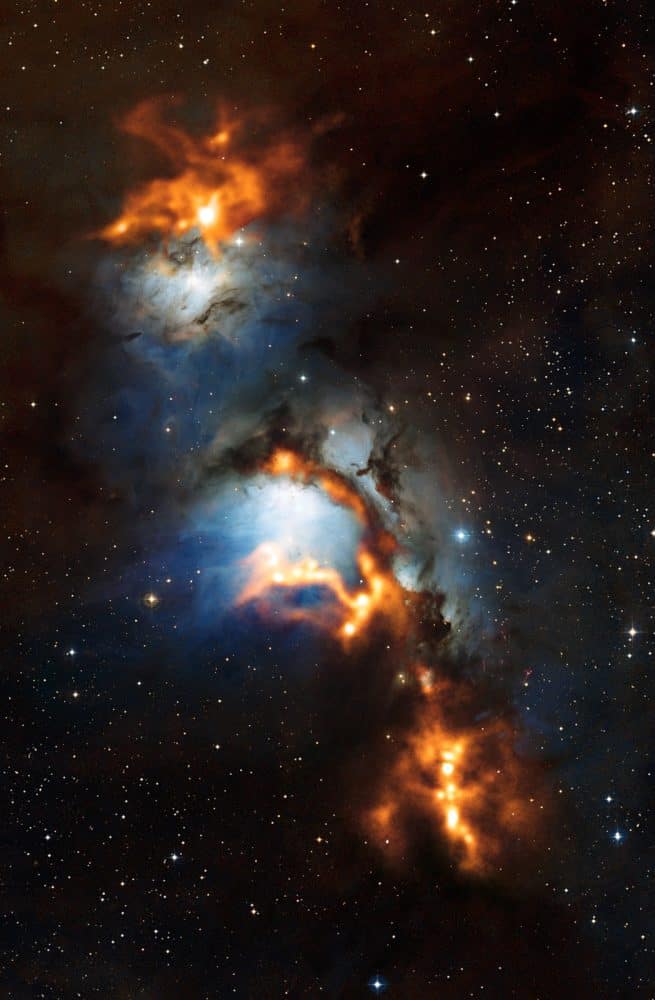The Cosmos with M78
This image of the region surrounding the reflection nebula Messier 78, just to the north of Orion’s belt, shows clouds of cosmic dust threaded through the nebula like a string of pearls. The submillimetre-wavelength observations, made with the Atacama Pathfinder Experiment (APEX) telescope and shown here in orange, use the heat glow of interstellar dust grains to show astronomers where new stars are being formed. They are overlaid on a view of the region in visible light.
Messier 78 or M 78, also known as NGC 2068, is a reflection nebula in the constellation Orion. It was discovered by Pierre Méchain in 1780 and included by Charles Messier in his catalog of comet-like objects that same year.
M78 is the brightest diffuse reflection nebula of a group of nebulae that includes NGC 2064, NGC 2067 and NGC 2071. This group belongs to the Orion B molecular cloud complex and is about 1,350 light-years distant from Earth. M78 is easily found in small telescopes as a hazy patch and involves two stars of 10th and 11th magnitude. These two B-type stars, HD 38563 Aand HD 38563 B, are responsible for making the cloud of dust in M78 visible by reflecting their light.
